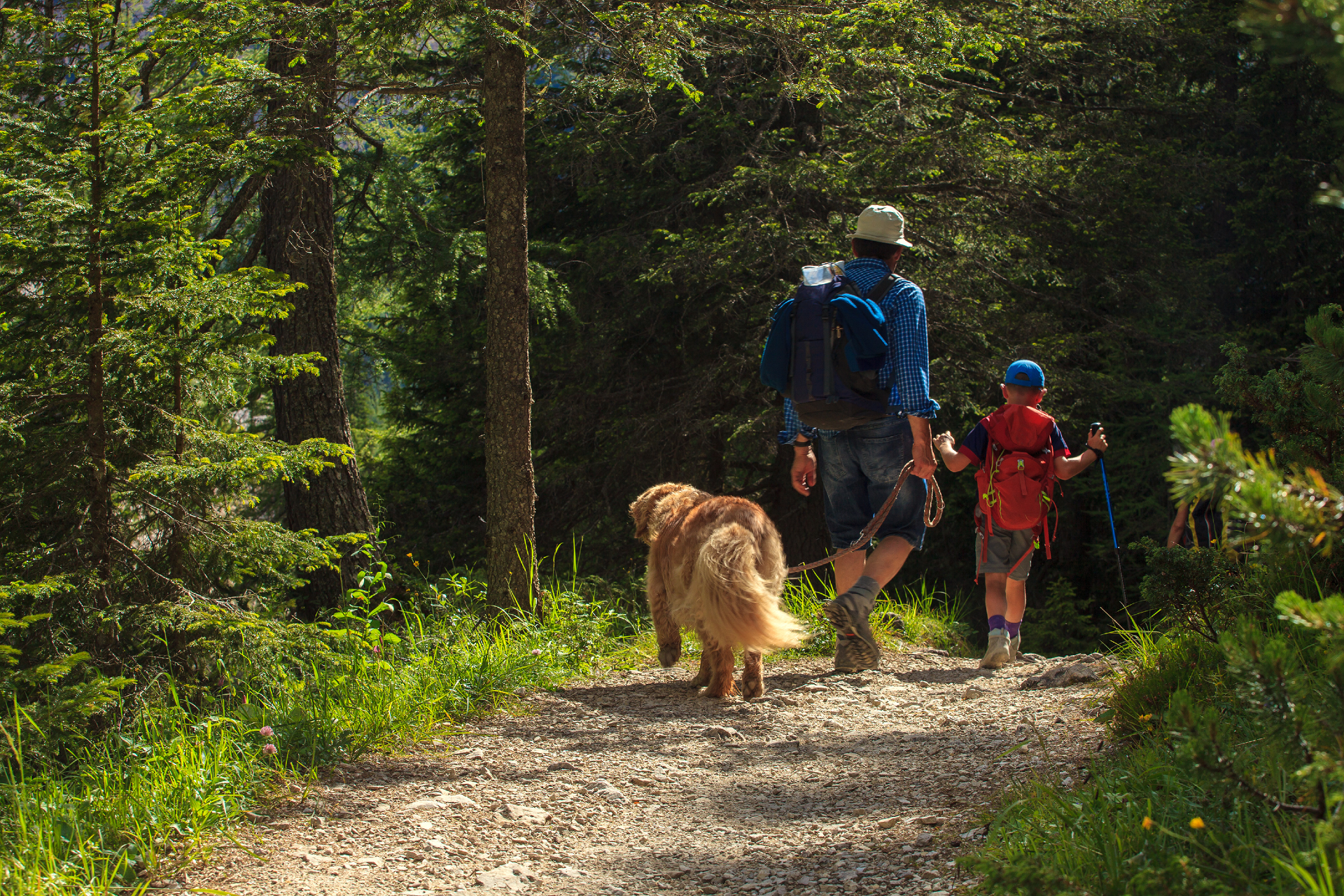People often misjudge a pup’s hiking abilities.
They don’t think they require much water, they can go forever, they are used to it, they’re fine… Are they? When dogs are outside with their owners they can be so excited any signs of discomfort can easily go unnoticed. Here are some behaviors and trail conditions to be on the lookout for when hiking with your four-legged friend during the warmer months.
Will the trail you are on have a water source- even in a drought year? If not, be sure to bring water for yourself and Fido.
Consider the age of your pet. Just because you feel like you can make a 12-mile round-trip hike- is your dog up for it? Consider its age, condition of pads, temperature, recent injuries, etc.
Choose trails with shade and paths without sharp rocks.
Be able to recognize overheating. When exercising outdoors, heatstroke is a concern.
Be on the lookout for:
- Excessive panting
- Heavy, thick drooling
- Red or pale gums and tongue
- Extreme fatigue
- Vomiting
- Disorientation/dizziness
Get your dog to a cooler location immediately and call your veterinarian if your dog is showing any of these symptoms.
How to cool down a dog that is overheating:
- It’s important to cool them down slowly to not shock their system.
- Apply water gradually.
- Soak a piece of clothing and place that on your dog.
- The belly, chest, groin, and paws cool more quickly so concentrate on those areas.
- If possible get to shade if you are still a ways from your vehicle. Let them lie down and rest.
- They may not feel like drinking. Don’t force them but encourage them every few minutes.
- Overheating, and damage to their paws becomes very real in temperatures over 90 degrees.
- Is it a better day for a swim or a light walk in the evening?
- Short-nosed dogs are especially prone to overheating.
- Breeds bred for colder temperatures can also be sensitive if they haven’t had time to acclimate.
- Hike in the morning.
- Higher elevations bring higher sun exposure and even altitude sickness for your pet.
Did you know:
Removing too much fur can interfere with the dog’s ability to regulate its temperature. It not only helps to keep them cool, but it’s also a natural built-in sunblock. Shaving increases the risk of sunburn and overheating. Other types can benefit from a summer cut, especially those prone to “hot spots”. If this sounds like your dog, talk to your vet about the best options.
Here are just a few of the many dog-friendly hikes (north of Ketchum) within the SNRA as rated by hikers on the Alltrails App.
Adams Gulch
Taylor Canyon Loop
Fox Creek
Chocolate Gulch
Murdock Creek- perfect for the senior pups
Billy’s Bridge
Galena Creek
Remember –
Just because you are in the wilderness doesn’t mean your dog can run wild. Bring a leash when hiking in the SNRA and please remember to use it!




